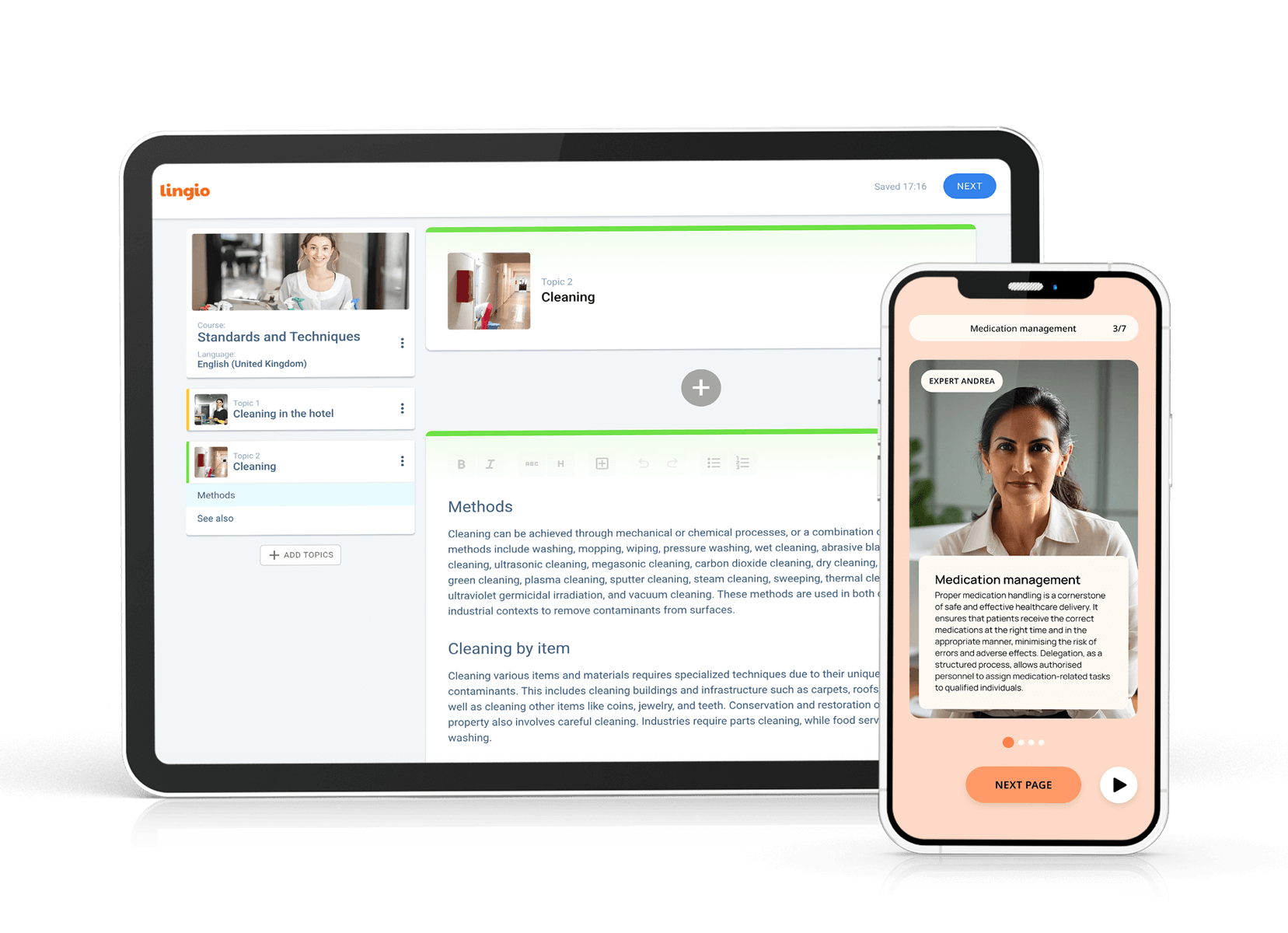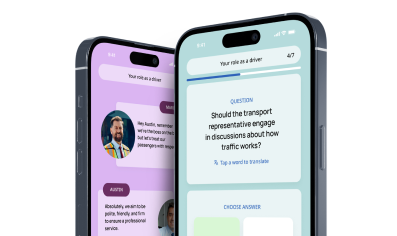In recent years, gamification has become a powerful tool in learning and education. Educational games, which focus on teaching concepts through gameplay, differ from gamification, which uses game elements in non-game contexts. Educators have enhanced learner engagement, motivation, and overall educational outcomes by integrating gaming elements into the learning process. As we look forward to 2025, it’s essential to understand the potential of gamification in learning and how it can be effectively incorporated into educational practices. In this article, we will explore gamification’s key aspects, its benefits, and the best examples to inspire educators. Additionally, we will discuss the best practices and trends for implementing gamification in 2025.
Understanding gamification in learning
Gamification is the application of game elements and mechanics in non-game contexts, such as education. It incorporates elements like points, badges, leaderboards, and challenges to make the learning experience more interactive and enjoyable. By leveraging the innate human desire for competition, achievement, and rewards, gamification can motivate students to participate actively, enhancing learner motivation, engagement, and knowledge retention.
One key benefit of such gamification is its ability to provide immediate feedback to learners. Through game elements and mechanics, learners receive instant gratification when they correctly accomplish a task or answer a question. This feedback loop reinforces positive behaviours and encourages learners to continue progressing through the material.
Gamified activities also encourage students by fostering collaboration and accountability. Long-duration, low-tech gamified activities promote student collaboration and accountability in their learning processes, enhancing engagement and reducing barriers to participation.
Furthermore, gamification can foster a sense of community and collaboration among learners. By incorporating social elements such as multiplayer games, team challenges, and collaborative activities, gamified learning environments promote teamwork and communication skills. Learners can interact with their peers, share knowledge, and work together towards common objectives, creating a supportive and engaging learning community.
Benefits of incorporating gamification into learning for student engagement
There are several compelling reasons to incorporate gamification into the learning process:
- Increased engagement: Gamification captures learners’ attention and keeps them actively involved in the learning activities. It transforms the learning process from passive to interactive, making it more engaging.
- Enhanced motivation: Gamification motivates learners to strive for better results and achievements by introducing game elements such as challenges, points, and rewards.
- Improved retention: Gamification’s interactive and immersive nature enhances learners’ ability to retain information. It encourages learners to apply what they have learned in real-world scenarios.
- Personalised learning: Gamification allows for customisation and adaptive learning paths, catering to individual learners’ needs and pace.
- Collaborative learning: Gamification can foster collaboration and competition among learners, promoting knowledge sharing and peer feedback.
Integrating gamification into online courses can significantly enhance learner engagement and motivation. By incorporating game elements such as points, badges, and leaderboards, traditional elearning can be transformed into an interactive and enjoyable experience for students.
Furthermore, incorporating gamification into learning can also significantly improve learners’ problem-solving skills. Presenting challenges and puzzles in-game elements in the online learning environment encourages learners to think critically, analyse situations, and develop creative solutions. This not only enhances their problem-solving abilities within the context of the learning material but also equips them with valuable skills that can be applied in various real-life scenarios.
Moreover, such gamification can help create a sense of accomplishment and progression for learners. As they complete tasks, earn points, and unlock achievements, learners experience a sense of fulfilment and advancement, which can boost their confidence and self-esteem. This sense of progression can motivate learners to persist in their learning journey and take on increasingly challenging tasks with enthusiasm and determination. Additionally, when students complete quizzes both individually and collaboratively, they can discuss their answers in groups, enhancing engagement and understanding through peer interaction.
Differences between gamification and game-based learning
While gamification and game-based learning share similarities, it’s essential to understand their differences:
- Gamification: Gamification incorporates game elements into the learning process without requiring full-fledged games. It enhances learning by applying game mechanics and principles within existing learning environments.
- Game-based learning: Game-based learning involves using complete games as educational tools. Learners directly engage with games designed specifically for learning purposes, immersing themselves in interactive scenarios and challenges.
Educational approaches can incorporate video game design elements to increase engagement and motivation among students.
Both gamification and game-based learning have gained popularity in educational settings due to their ability to increase engagement and motivation among learners. Gamification often utilises elements such as points, badges, and leaderboards to incentivise participation and progress. This approach is efficient in non-game contexts, such as corporate training or language learning platforms.
On the other hand, game-based learning provides a more immersive experience by placing learners in simulated environments where they can practically apply knowledge and skills. These games are designed to offer immediate feedback, encouraging players to learn through trial and error. Additionally, game-based learning can cater to different learning styles and preferences, making it a versatile tool for educators across various disciplines.
7 Best Examples of Gamification in eLearning
Let's explore some of the most compelling examples of gamification in eLearning:
1. Interactive quizzes with badges
Interactive quizzes with badges provide learners with a sense of achievement and progression. Students complete quizzes to earn badges, motivating them to strive for better results and reinforcing their learning achievements.
Also, learners can strive to climb up the ranks and earn the coveted top spot by introducing leaderboards that display the top performers. This not only motivates learners to excel but also fosters a sense of community as they engage in friendly competition with their peers.
2. Progress tracking with levels, milestones, and game mechanics
Progress tracking systems with levels and milestones offer learners a visual representation of their learning journey. As learners complete tasks or modules, they unlock new levels, providing them with a sense of progress and accomplishment.
As they progress through different levels, learners can unlock additional resources, bonus content, or even exclusive access to expert-led webinars. This adds excitement to the learning journey and provides learners with tangible rewards for their efforts.
3. Scenario-based learning games
Scenario-based learning games present learners with real-life situations where they must make decisions and face consequences. By simulating real-world scenarios, learners can apply their knowledge and skills in a practical context. By allowing learners to make choices that lead to different outcomes, they can experience the consequences of their decisions in a safe environment. This enhances critical thinking skills and encourages learners to explore other paths and learn from their mistakes.
4. Virtual avatars and customisation
Virtual avatars and customisation features allow learners to create virtual personas, enhancing their sense of ownership and engagement in learning. Learners can customise their avatars based on their preferences and progress. By fostering a sense of belonging and camaraderie, learners are likelier to stay engaged and motivated throughout their learning journey.
5. Points and leaderboards
Points and leaderboards introduce a competitive element to learning that can motivate students. Learners earn points for completing tasks or answering questions correctly, and their progress is displayed on leaderboards, fostering healthy competition and motivation to perform better.
Points and leaderboards can be made even more engaging by introducing team-based competitions. By dividing learners into teams and awarding points based on team performance, learners compete individually and work together to achieve a common goal. This not only promotes teamwork but also encourages peer-to-peer learning and support.
6. Story-based learning with missions, challenges, and learning objectives
Story-based learning incorporates narratives and missions into the learning experience. Learners embark on learning journeys, complete missions, and overcome challenges within a compelling storyline, making the learning process more engaging. By immersing learners in a rich storytelling experience, they can connect emotionally with the content and retain information more effectively. This creates a memorable learning experience that goes beyond traditional text-based materials.
7. Rewards and incentives
Rewards and incentives are powerful motivators for learners. By offering tangible or intangible rewards for achieving learning milestones or demonstrating progress, learners feel a sense of accomplishment and are more motivated to continue learning.
Offering a range of rewards allows learners to select rewards that align with their interests and motivations. This personalisation increases the perceived value of the rewards and ensures that learners are genuinely motivated to achieve them.
Educators can create engaging and effective learning experiences that motivate learners to participate and excel by implementing these gamification strategies in eLearning. Whether through interactive quizzes, progress tracking systems, scenario-based learning games, virtual avatars, points and leaderboards, story-based learning, or rewards and incentives, gamification can transform eLearning into an exciting and immersive journey.
Best Practices and Trends for Implementing Gamification in 2025
To successfully implement gamification in the year 2025 and beyond, educators should consider the following best practices and trends:
Gamification in education has evolved significantly, with a growing emphasis on personalisation. Tailoring gamification experiences to individual learners' preferences and needs is crucial for enhancing engagement and motivation. In 2025, educators are encouraged to leverage cutting-edge technologies such as artificial intelligence and adaptive learning systems to create bespoke learning journeys that cater to each student's unique learning style.
- Personalisation: Tailor gamification experiences to individual learners' preferences and needs, leveraging technologies such as artificial intelligence and adaptive learning systems.
- Mobile compatibility: Make gamified learning experiences accessible on multiple devices, ensuring learners can engage with them anytime and anywhere.
- Data-driven insights: Utilize data analytics to gain insights into learners' progress, preferences, and engagement levels, allowing for targeted interventions and continuous improvement.
- Social learning integration: Integrate gamification elements with social learning platforms to foster collaboration, knowledge sharing, and peer feedback.
- Virtual reality and augmented reality: Harness the power of immersive technologies like virtual reality and augmented reality to create highly engaging gamified learning experiences.
Furthermore, the shift towards mobile compatibility is reshaping the landscape of gamified learning. With the increasing prevalence of smartphones and tablets, educators recognise the importance of making gamified content accessible across multiple devices. This ensures that learners can engage with gamification activities on their preferred devices, whether at home, on the go, or in a classroom setting.
Discover the Future of Learning with Lingio
Ready to take your educational strategies to the next level? Lingio is at the forefront of transforming professional development with our innovative AI Course Creator and gamified learning approach. Experience how our tailored solutions can make learning practical and truly enjoyable. See Lingio in action and witness the impact of fun, AI-powered learning on your team's progress. Book a demo today and join the revolution in learning and development.

FAQs
Let's address some frequently asked questions about gamification in e-learning:
1. Is gamification only suitable for specific subjects or age groups?
No, gamification can be applied to various subjects and age groups. However, the implementation strategies may vary to align with each group's specific needs and learning objectives.
2. Is gamification a replacement for traditional teaching methods?
Gamification is not intended to replace traditional teaching methods but to complement them. It adds an interactive and motivational layer to existing instructional frameworks, enhancing the learning experience.
3. How can educators measure the effectiveness of e-learning gamification?
Educators can measure the effectiveness of gamification by monitoring learners' engagement, progress, and performance. Additionally, qualitative feedback and assessments can provide valuable insights into learners' experiences and the impact of gamification on their learning outcomes.
4. Are there cultural considerations to keep in mind when implementing gamification?
Cultural considerations play a crucial role in successfully implementing e-learning gamification. Educators must be mindful of cultural sensitivities, preferences, and norms to ensure that gamified elements resonate positively with all learners, regardless of their background.


Table of contents
Intro
Understanding gamification in learning
Benefits of incorporating gamification into learning
Differences between gamification and game-based learning
7 Best Examples of Gamification in eLearning
Best Practices and Trends for Implementing Gamification in 2024
Discover the Future of Learning with Lingio
FAQs

